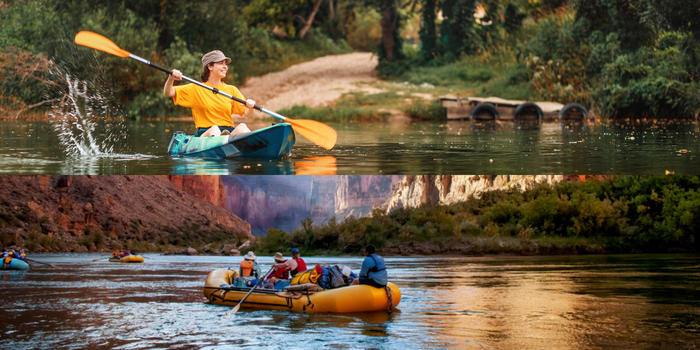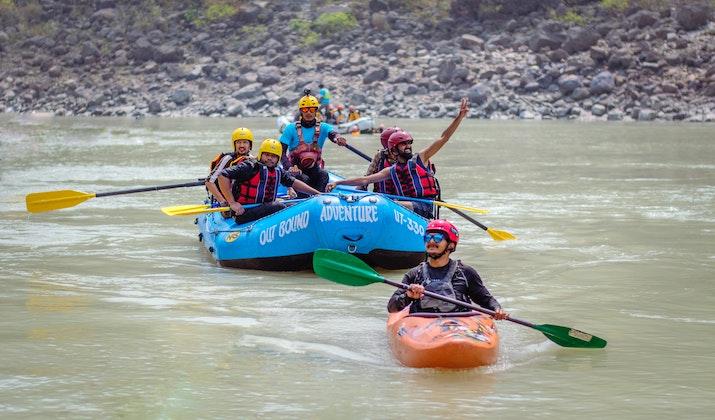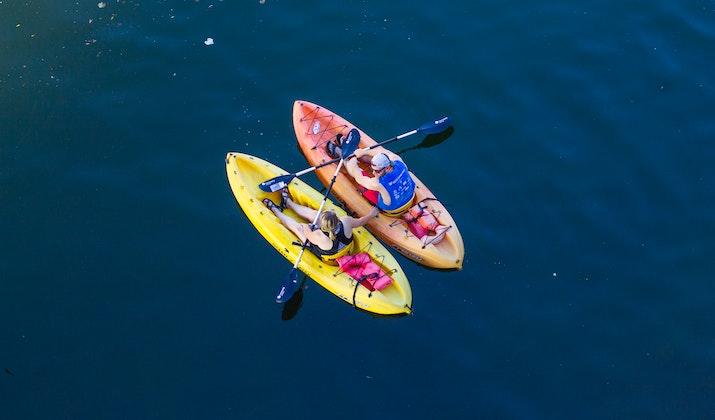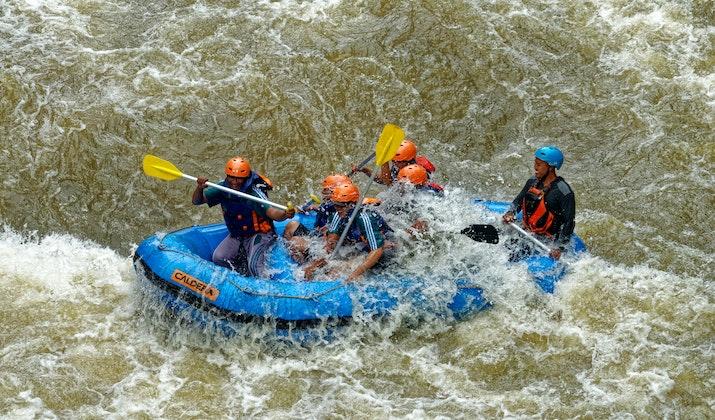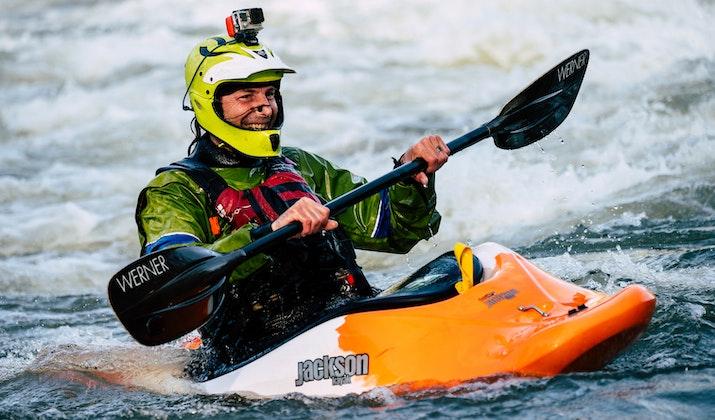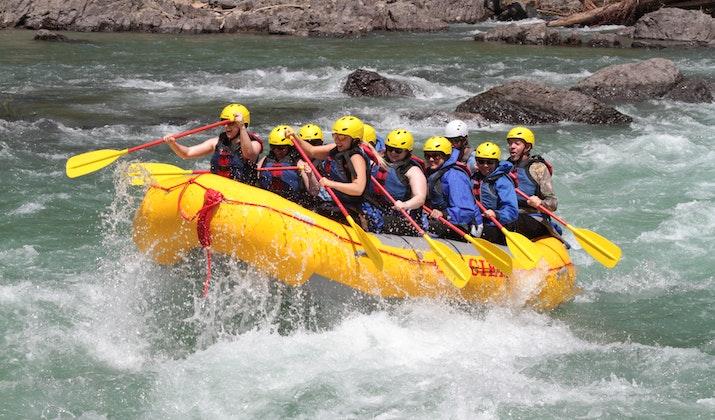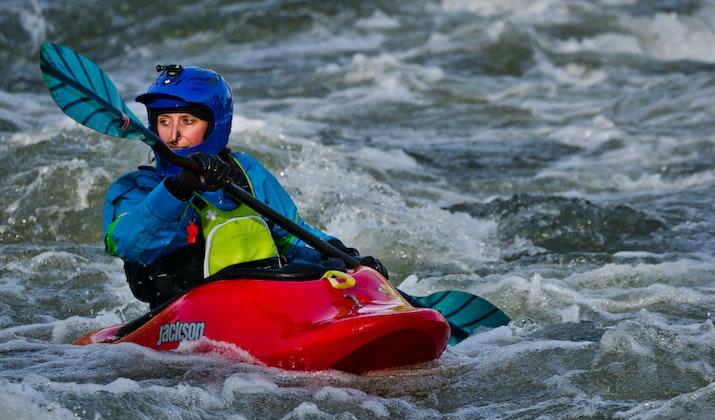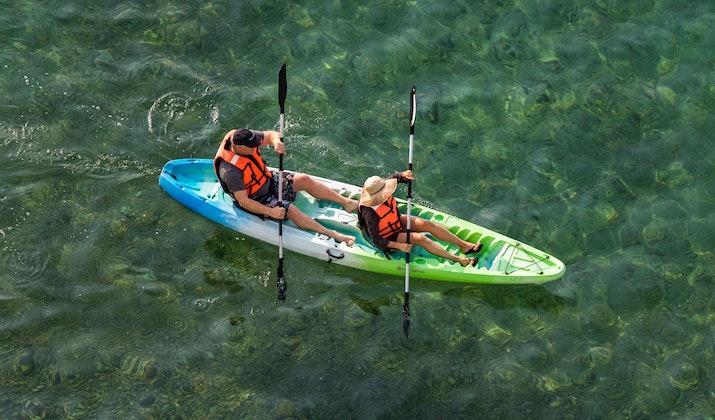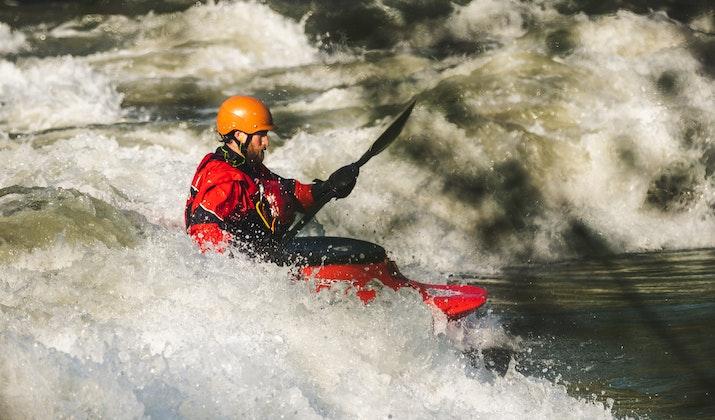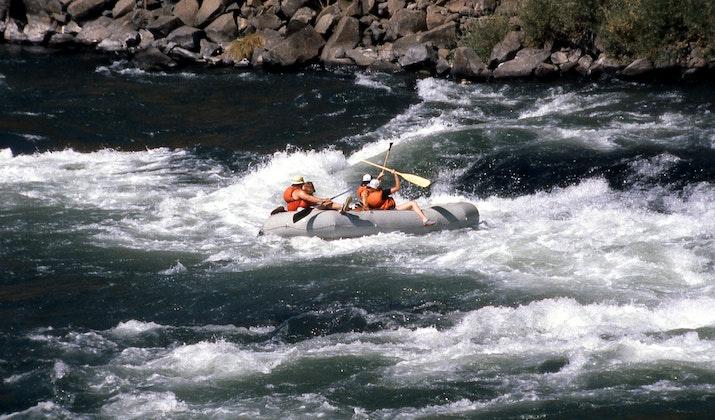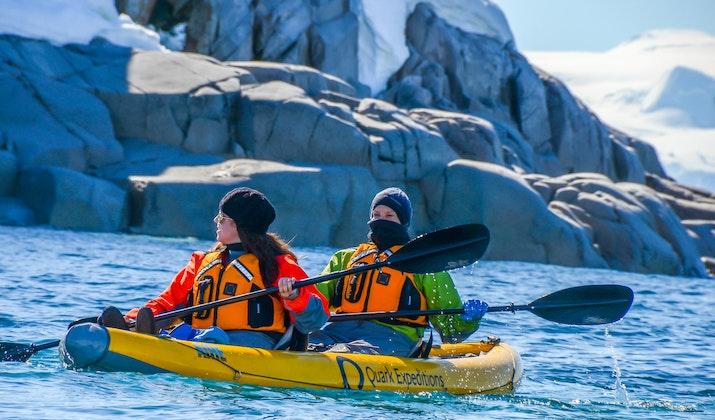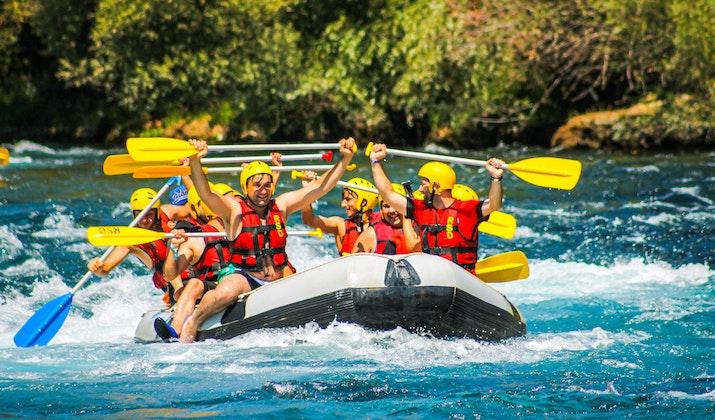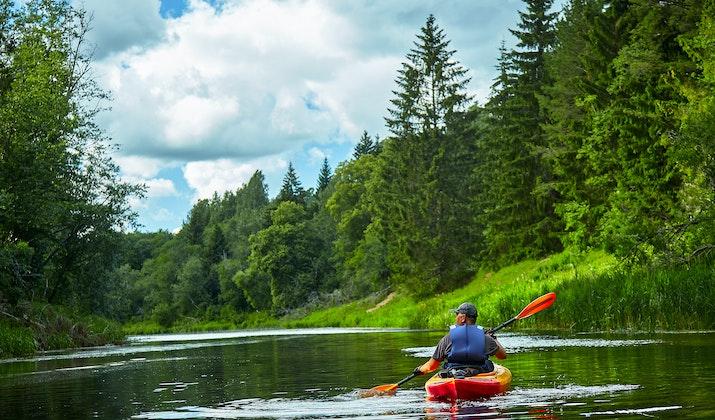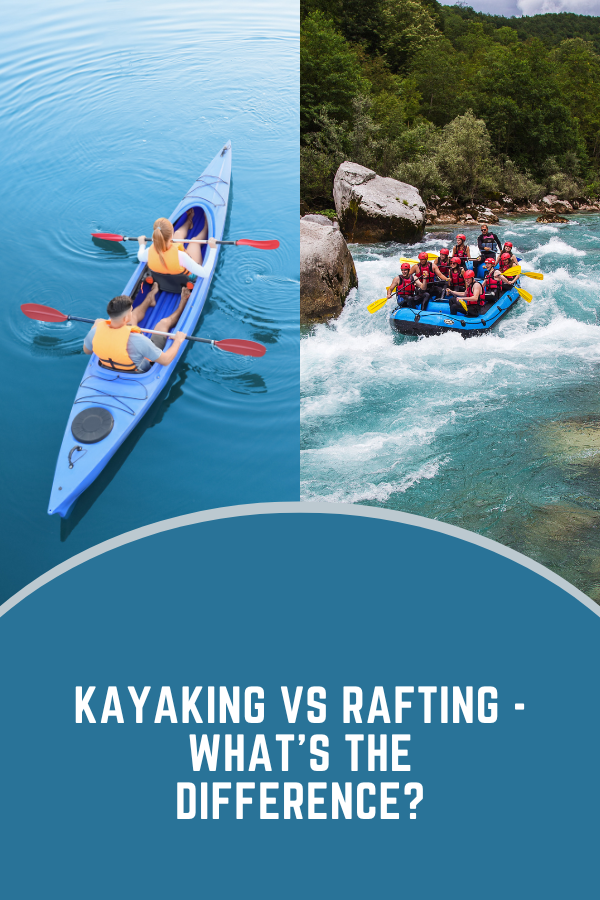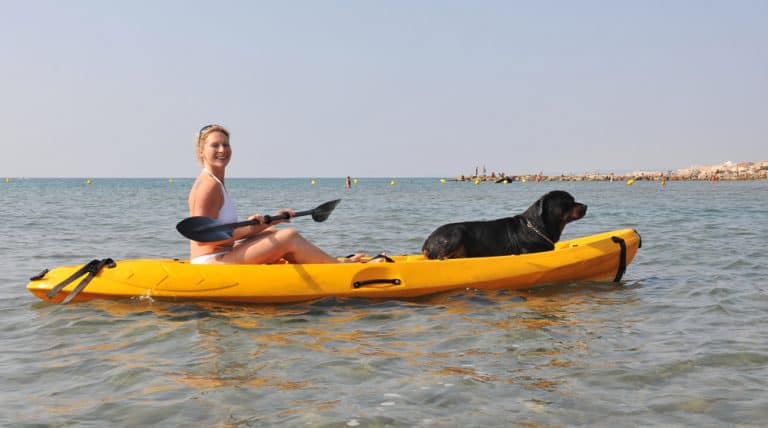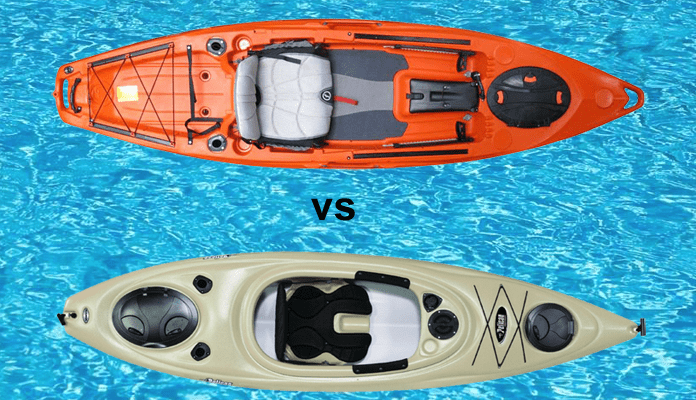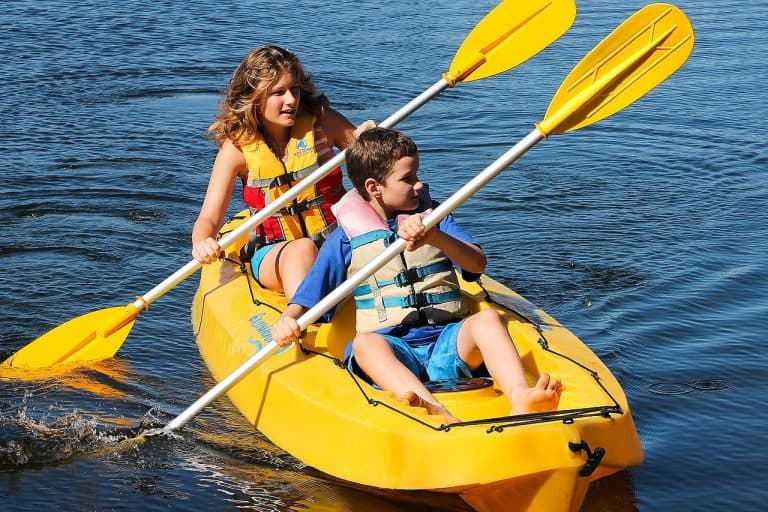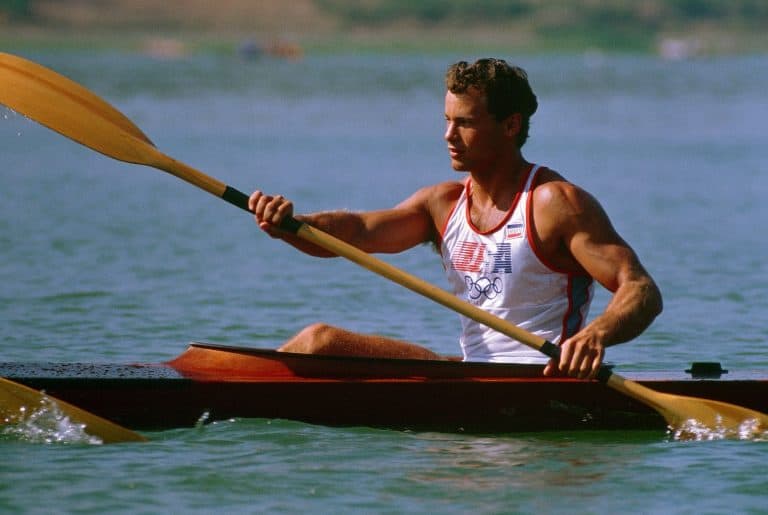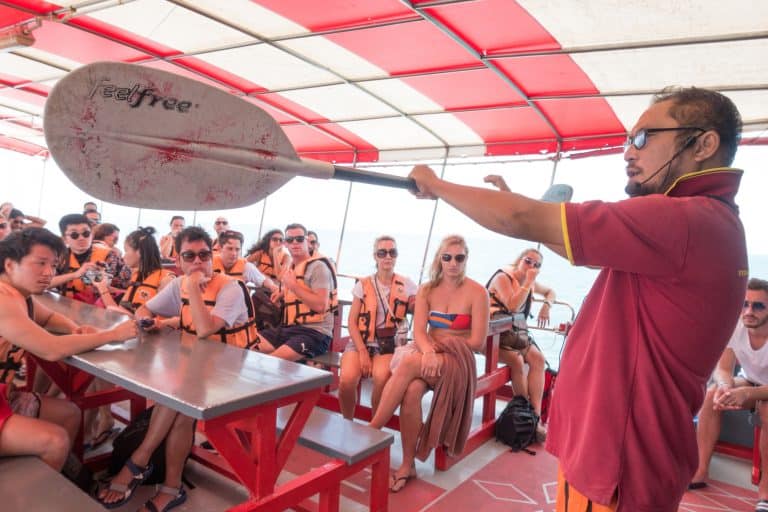Kayaking and rafting are some of the most popular recreational water sports that give you an opportunity to get active and explore the outdoors.
However, people who are new to watersports often have a hard time differentiating one from the other. Although both rafting and kayaking require a floating apparatus to help you sail across the water, that’s where their similarities end.
Each one offers its own set of thrills and experiences and may appeal to different kinds of people.
Knowing what each sport entails will help you decide whether kayaking or rafting is the right recreational water activity for you and your loved ones.
In this article, I’m going to break down the significant and subtle differences between kayaking and rafting so you can better understand what sets the two sports apart.
Photo by Manik Mandal
What is Kayaking?
Photo by Roland Chanson
Kayaking is unofficially known as the fastest-growing water sport. It is an outdoor recreational activity and water sport that involves paddling back and forth, from one point to another in a kayak with a double-sided oar.
The allure of kayaking is it can be enjoyed in all kinds of water spaces including ponds, lakes, rivers, lagoons, waterfalls, and the ocean.
Kayaks are usually designed to fit one person, although some kayaks can take an additional paddler or two. Although it has risen to prominence over the past two decades, kayaking has a very ancient history that can be traced back to the Arctic region, where they were used as a mode of transport by Inuit tribes in Alaska, Canada, and Greenland.
Due to the ice-filled waters in the region, it wasn’t possible to journey across the waters in large boats. To get around, the natives made small fishing and hunting boats out of seak skin stretched over wood or whale bones, waterproofed with animal fat. Eventually, kayaking spread to Europe through Scandinavian explorers and missionaries in the late 1800s.
However, kayaking didn’t catch on as a sport until the 20th century. In 1924, it was featured as a demonstration sport at the Paris Olympic Games and was fully integrated into the competition at the 1936 Berlin Olympics.
Kayaking has come a long way from its Inuit origins. Modern-day kayaks are now manufactured using materials such as polyethylene, kevlar, fiberglass shells, carbon fiber, or thermoformed ABS-acrylics.
Also Read: Tandem Kayak vs Canoe
What is Rafting?
Photo by Tom Fisk
Rafting is a water sport that involves floating down a body of water on an inflatable craft, known as a raft. Water rafting is a great way to experience different kinds of waters from rivers to the rougher white waters.
Depending on your skill level, you can explore waters of different intensities, speeds, and difficulties. Unlike kayaking which only requires one or two individuals to pull off, rafting is usually done as a group activity because a raft can take more people compared to a kayak.
Rafting has been around for hundreds of years. Back in the day, people used to transport all kinds of items using rafts. However, the first rafting expedition didn’t occur until 1842 when Lieutenant John Fremont of the U.S. Army used rafts to explore the Platte River.
By the 1960s, white water rafting had become widely popular and people began setting up white water rafting companies. In the 1970s, white water rafting went from being just a leisure sport to being featured in the Olympic games.
By the time the 1980s rolled around, the popularity of rafting had soared even higher leading to the establishment of several independent rafting companies throughout Africa, Scotland, and South America.
In 1997, the International Federation of Rafting (IRF) was established and two years later, the first official international championship was held, cementing rafting’s place as a respected water sport.
Back in the day, rafts were made using rubber cloth tubes and a floor. Some others were made of wood, sealed barrels, and inflated chambers of air. However, modern-day rafts are made with more durable wear and heat-resistant materials like hypalon, polyurethane, and polyvinyl chloride (PVC).
Kayaking vs Rafting: Boat type
Photo by Brett Sayles
Kayaking and rafting require different kinds of boats. For kayaking, the right type of boat to use is a kayak. These are usually long and narrow which makes it easy for them to fit in and meander through tight spaces.
The seats in kayaks are located on the floor of the kayak with space for you to extend your legs out in front of you. There are sit-on-top kayaks that come with an open hull design that allows you to recline the length of your body on top of the kayak.
However, most kayaks are designed as sit-in kayaks, which means that you will be seated inside the hull of the kayak and your legs will slide underneath the deck. Kayaks are smaller vessels than rafts and they require the use of double-bladed oars or paddles.
The insides of kayaks have limited mobility and they have a top cover or deck that stops water from overflowing into the cockpit and protects paddlers and their kayaking gear from getting wet””an option that is not available in a raft.
The right boat for rafting is an inflatable raft. These are usually flat and wider than kayaks and can carry more people. Unlike kayaking, rafting paddles are single-bladed and the raft is completely open without any deck or covering of any kind.
With rafting, the number of paddlers is usually divided equally on both sides of the raft so there’s a balance, and one person is usually placed at the front or back to help steer the raft through the water.
There are three main types of rafts you can use: motor rafts which are powered by a motor, paddle rafts which you have to paddle yourself, and a combination of both.
Rafting vs Kayaking Size and Weight
Photo by Walter Rock
In terms of size and weight, rafts are much larger and heavier than kayaks. A single raft can typically take about 6-10 people, while a kayak is designed to hold one to two people at the most.
A kayak is an elongated and slender craft, which means you can manage to log it around on your own from one kayaking destination to another.
You can buy your own lightweight kayak and take it with you on float trips or rent one at a nearby location and transport it to the water easily. However, since rafts are quite heavy and rafting is a group activity, it might not make a lot of sense to buy a raft for just yourself.
This means that you will have to hire a raft big enough to take your group before your rafting trip and enlist the help of other people to transport it.
Kayaking vs Rafting: Required Skill Levels
Photo by Kevin Bidwell
The level of skill required for your rafting or kayaking trip will depend on the kind of kayaking and rafting you’re doing and the water you will be exploring. White water kayaking and white water rafting both require you to be an experienced paddler capable of tackling rough rapids.
However, kayaking demands more skills and experience because you’d typically have to paddle a kayak on your own. You need to know how to handle the paddle, what strokes to use, and how to deal with the wind and navigate correctly, or you risk getting yourself in a lot of trouble especially if you’re kayaking solo.
But in the case of whitewater rafting, you can rely on a stronger raft as well as the skills and experience of fellow crafters to make up for your lack of experience.
Rafting vs Kayaking: Manoeuvrability
Kayaks are much easier to maneuver than rafts because of their small frame and weight, so you will get more control in navigating your watercraft. You can easily make turns, paddle through narrow spaces, and make sharp movements with kayaks.
So if you want to be able to explore water bodies with very little room and use creative maneuvers to slice through the water, kayaking is better suited to the task than rafting.
Kayaking vs Rafting: Stability
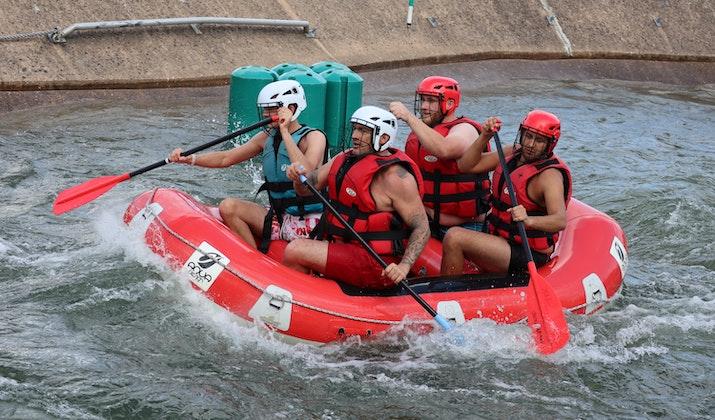
When it comes to stability, rafting is a less precarious activity. The weight and size of rafts make them more stable than kayaks. If you are not careful and you don’t have the right level of skills and experience to match the intensity of the water you’re navigating, your kayak can easily tip over.
But this also means that it can also easily be flipped back with a little maneuvering. So there’s really no need to be agitated by the potential of your kayak flipping over. It’s part of the experience.
This is why all beginner kayakers are encouraged to take training classes to learn different paddling techniques and rescue maneuvers that they can use to stay safe and right a kayak if it capsizes while out on the water.
Rafting vs Kayaking: Paddling Styles
Photo by Christian Gonzalez V
Since Kayaks are much smaller and narrower than rafts, you can easily reach both sides. This is why a double-bladed paddle is used to glide through the water from side to side to propel you forward and help your kayak make it down the lake, river, or ocean.
The largeness and wilderness of rafts only allow each paddler to reach one side. This is why rafting requires a single-bladed oar and the raft is split between the group so each rider can paddle a specific side to row the watercraft in the direction you want it to go.
With some tips and instructions from your guide, you can quickly get a sense of how to paddle a kayak. But learning to row as a team on a raft takes a bit of time because more people are involved and harmony needs to be achieved.
Kayaking vs Rafting: Speed and Overall Experience
Photo by Brett Sayles
If you want greater control over your watercraft and the speed at which it moves, kayaking is the better option for you. Kayaking offers you more control of your vessel so you can maintain whatever speed you want while floating down the water.
Keep in mind that the faster you paddle your kayak, the more stress it will put on your muscles and the bigger the energy you will use up, so make sure you can handle the additional pressure. The last thing you want is to be stranded on the water because you are too tired to paddle back.
The size of rafts and the number of people they carry makes them move more slowly than kayaks. So you might not be able to get the kind of speed you want on your trip and you cannot unilaterally decide to row at a faster pace than your fellow riders. Rowing faster won’t make much of a difference if you’re the only one paddling at that pace.
It’s just going to help you tire out faster than the rest of the group. But you can compensate for the diminished speed that rafting offers by exploring rougher, more intense waters to give yourself a bigger thrill.
Also, the sleek design coupled with the fact that kayaks sit lower in the water enables them to cut through and push away more quickly and deftly, giving you a smoother riding experience than what you would get on a raft.
In addition, kayaking provides a more flexible and versatile paddling experience because the small size of kayaks makes it easy to kayak in all kinds of waters and even go on spontaneous paddling trips.
Rafting vs Kayaking: Clothes and Equipment Needed
Photo by Max Brassfield
You can wear the same type of clothes for kayaking and rafting. Just remember to dress for the water temperature, and not just the air temperature, and choose items of clothing that you won’t mind getting wet.
A simple t-shirt and shorts might be okay during hot summer days, but you may want to bring a light jacket or dress in layers to keep yourself warm on cloudy or cooler days.
If you want more comfort or to avoid getting wet, you can also opt for a wet suit or dry suit and paddling pants. On the equipment front, rafting and kayaking also share many similarities. Kayaking gear usually includes:
- A kayak
- A kayak paddle
- Waterproof or fast-drying clothes
- Water-resistant shoes
- A spraydeck
- A personal flotation device (life jacket)
Rafting gear and equipment typically include:
- An inflatable raft
- Single-bladed paddles
- Helmets
- Life jackets
- Neoprene suits (for colder locations)
- Rescue throw bags
Most kayaking and rafting companies can provide you with all the necessary equipment you need for your paddling trip.
Kayaking vs Rafting: What Are the Different Types?
Photo by Karson
There are many different types of kayaking. They include:
- Recreational kayaking – Done for fun and entertainment purposes on calm waters using a recreational kayak.
- Sports kayaking – Also known as white water kayaking. It’s done in rough waters such as a river with waterfalls and rapids using a whitewater kayak.
- Sea kayaking – Done on large bodies of water like the open ocean using a sea kayak. It requires you to cover a great amount of distance and a trip can take up to a few days.
- Kayak fishing – Done for the purpose of catching fish far out on the water while floating in a fishing kayak.
- Kayak camping – This combines kayaking with camping and other fun activities. It usually lasts a few days.
There are two distinct types of rafting: river rafting and white water rafting. White water rafting has six classifications ranging from easy and simple to intense and dangerous. The classes of white water are graded according to the International Scale of River Difficulty as:
- Class 1
- Class II
- Class III
- Class IV
- Class V
- Class VI
Class I, II, and III rapids are safe for basic level rafting and inexperienced paddlers, so your whole family can partake in the experience.
On the other hand, rapids graded as class IV and up require greater skill and can be quite dangerous, so stay away from them unless you are an experienced paddler.
Rafting vs Kayaking: Which is More Expensive?
Photo by Hilmi Işılak
In the short term, kayaking can be more expensive, especially if you decide to buy a kayak outright instead of renting one whenever you need it. While rafting can benefit from discounted group rates that cut down the overall price for each person.
However, rafting might come ahead as the costlier option in the long run because it’s hardly ever convenient to buy your own raft outright and carry it around, so you will have to make do with renting one every time.
Kayaking vs Rafting: Which is Safer?
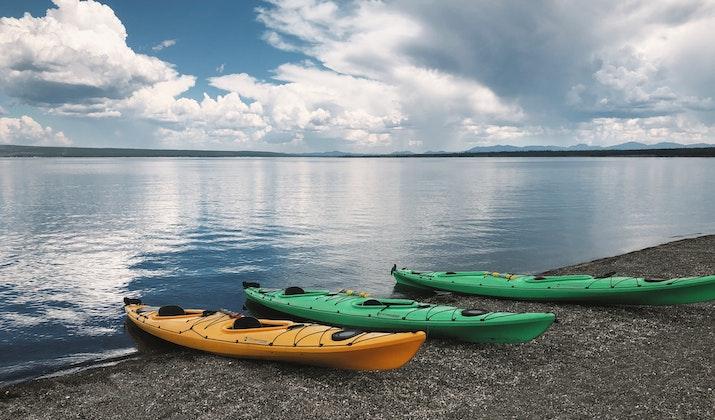
Rafting is generally a safer way to explore bodies of water than kayaking. This is because rafts are inflatable and bigger than kayaks and move more slowly. What’s more, rafting involves multiple people so you will always have help at the ready if you run into any difficulties.
But with kayaking, the boats are smaller and are more prone to flipping over. You will be personally responsible for controlling your craft and if you run into any problems, you’ll be on your own, especially if you’re not kayaking with a group.
You can increase the safety of either kayaking or rafting by opting for calmer waters instead of rough ones.
Rafting vs Kayaking: Who is it Best For?
Photo by Andris Bergmanis
Kayaking is an ideal sport or recreational activity for people who want to venture out in the water on their own or rely on their own skills to paddle a boat. Rafting is perfect for groups of people so it serves as a great family or team activity.
So if you’re looking for a water adventure that you can go on with your friends, family members, or even coworkers, rafting is the more suitable choice.
If you want to bask in the spirit of camaraderie while relishing the sense of accomplishment that comes with paddling across the water on your own, kayaking can give you that. All you have to do is plan or book a group tour or kayak camping trip.
Final Word
Whether you choose to go rafting or kayaking, you are guaranteed to have loads of fun and get amazing memories and good work out of the experience.
With the abundance of rafting and kayaking companies around, you can try out both activities and decide which you most enjoy.

